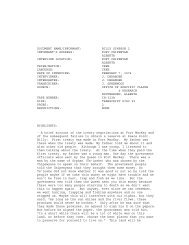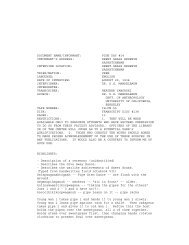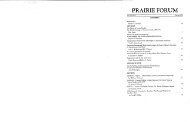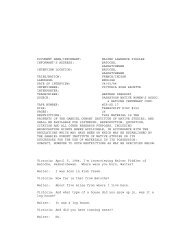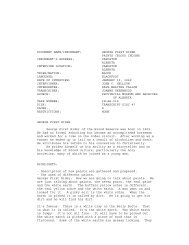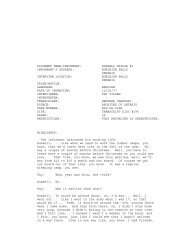Contents of It's not All in Your Head by Asmundson and Taylor
Contents of It's not All in Your Head by Asmundson and Taylor
Contents of It's not All in Your Head by Asmundson and Taylor
You also want an ePaper? Increase the reach of your titles
YUMPU automatically turns print PDFs into web optimized ePapers that Google loves.
Dur<strong>in</strong>g the creat<strong>in</strong>g subcategories <strong>and</strong> abstraction phase, the themes <strong>and</strong><br />
<strong>in</strong>formation units under each subcategory were exam<strong>in</strong>ed <strong>and</strong> used to name each<br />
subcategory. For example, <strong>in</strong> respond<strong>in</strong>g to question 1, there were many responses<br />
<strong>in</strong>dicat<strong>in</strong>g participants liked that they had learned new th<strong>in</strong>gs <strong>in</strong> the study <strong>and</strong> had more<br />
knowledge <strong>and</strong> skills after treatment than they had before. This was subcategory 1 <strong>and</strong> it<br />
was labelled ―learned new th<strong>in</strong>gs/changed th<strong>in</strong>k<strong>in</strong>g‖. Specific examples <strong>of</strong> this<br />
subcategory were learn<strong>in</strong>g relaxation techniques or complet<strong>in</strong>g exercises that helped<br />
participants underst<strong>and</strong> their health anxiety (e.g., identify<strong>in</strong>g th<strong>in</strong>k<strong>in</strong>g distortions or<br />
identify<strong>in</strong>g triggers for their anxiety symptoms). Initially many subcategories were<br />
created. Subcategories were then exam<strong>in</strong>ed <strong>and</strong> compared for each question. Based on<br />
their similarities some were comb<strong>in</strong>ed <strong>and</strong> the number <strong>of</strong> subcategories was reduced.<br />
Subcategory names were also revised so that they could best describe the <strong>in</strong>formation<br />
units. This resulted <strong>in</strong> 21 subcategories (2 - 5 per question, some subcategories were used<br />
for multiple questions; see Table 9).<br />
Beside each question category, a tally was made <strong>of</strong> the number response units<br />
which signified the number <strong>of</strong> times a response was given. As <strong>not</strong>ed above, some<br />
participants provided more than one response to each question <strong>and</strong> this resulted <strong>in</strong> more<br />
responses than participants for some questions (e.g., eight responses for ―learned new<br />
th<strong>in</strong>gs/changed th<strong>in</strong>k<strong>in</strong>g‖). The completed unconstra<strong>in</strong>ed categorization matrix with<br />
response tallies is presented <strong>in</strong> Table 9.<br />
72



